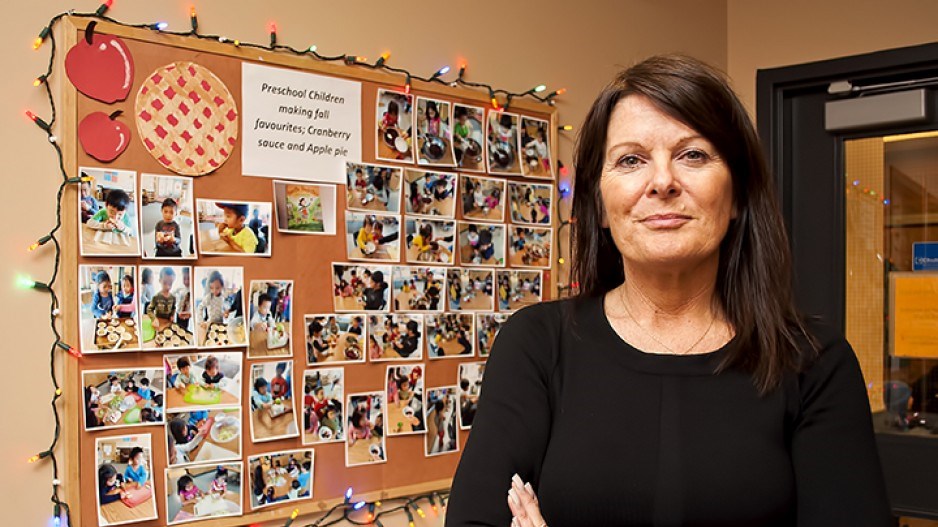There are high hopes for growing BC’s $10aDay child care system - but is it actually going to happen? If so, when?
Families desperate for government’s child care to come true have high hopes of finding an affordable licensed space. Early childhood educators have high hopes for a fair wage grid as promised in the of the Minister of State for Child Care, Grace Lore.
Thousands of additional child care spaces are required across sa国际传媒 but there are roadblocks to expansion. Some seem ridiculous, like the recent example of a Vancouver Board of Variance denying a child care owner’s request to double the size of her business from eight to 16 children largely because the neighbours complained bitterly about the sound of children playing outside.
Let’s be clear though - the child care shortage is never going to be solved by pinning our hopes on individual entrepreneurs offering seven or eight spaces in their homes (legal limits for in-home care). Yes, small home-based licensed child care settings are ideal for some children and families, and also work well in small communities. The $10aDay Plan welcomes them into the new system. However, to meet the demand for child care there must be publicly planned expansion on a far larger scale.
This is why the $10aDay Plan calls for school districts to be mandated and funded to deliver licensed child care for children 0-12 years. After all, schools are already publicly owned assets that serve the needs of children in the communities where they live. We are still waiting for Rachna Singh, Minister of Education and Child Care, to provide that mandate.
But, for the child care system to expand government first needs to address the key issue destabilizing child care today: the crisis in recruitment and retention of qualified educators with post-secondary credentials (ECEs), primarily due to low wages. As the cost of living escalates the low average wage of early childhood educators is insufficient to keep and attract qualified staff in the sector.
The $4/hr government funded ECE wage enhancement has helped but it’s not the answer, especially considering how many educators will be required to staff the 40,000 new spaces promised in the BC signed with the federal government.
Similarly, the recent of 2400 new $10aDay spaces is welcome news, but still means only about 10 per cent of existing licensed spaces are $10aDay.
The two organizations who developed the $10aDay Plan in 2011, the and the , have watched $10aDay become a reality in BC - and with federal funding, spread into every province and territory (plus interest now from the USA). We have solutions to the challenges!
To solve the ECE recruitment and retention crisis the solution is a publicly-funded ECE wage grid of at least $30-$40/hour based on qualifications and experience.
Last month we shared a pointing out that sa国际传媒 is lagging behind. Six other provinces have already started to implement wage grids. sa国际传媒 promised a wage grid but it’s nowhere to be seen. Our latest asking supporters to email Premier Eby, and relevant ministers, plus their MLA, has so far resulted in 3,400 people, representing every constituency in the province, taking the action. We hope readers of this article will take the quick too!
With a fair, equitable ECE wage grid in place, the rapid expansion of child care to meet the demands of families, including with flexible options, is completely achievable. We have recommendations for new facilities that are with that can be replicated across the province to create efficiencies and assure high quality for children.
For several years, we have also suggested that government bulk purchase custom-designed to expedite the creation of new child care facilities on public land across the province. A modular strategy has been promised by government several times but there’s no sign of it yet.
We know municipalities, like school districts, and even health authorities are ready to play their part, but they require coordinated public planning, child care expertise, and assured funding from the provincial government for a systemic and expedited roll out.
Many non-profit child care operators could significantly expand their child care programs but to do so they also require coordinated public planning, development expertise, and assured funding from the provincial government.
Rapid implementation of these solutions is doable, in part because child care is no longer a partisan issue. The economic and social benefits of public investment in quality child care are now so obvious that all provincial and territorial governments, of every political stripe, have signed an agreement with the federal government to achieve $10aDay child care.
And, this year Bill C-35: An Act respecting Early Learning and Child Care in sa国际传媒 passed with a in the House of Commons, historic all-party support for this equally-historic legislation describing the federal government’s long-term and substantive commitments to a child care system in sa国际传媒.
So, high hopes for a $10aDay child care system should become a reality - and soon - the solutions are clear, public support for $10aDay is real, and the next provincial election is looming in the not-too-distant future!
Sharon Gregson is the provincial spokesperson for the Coalition of Child Care Advocates of BC



